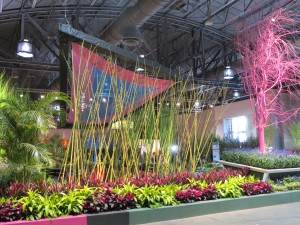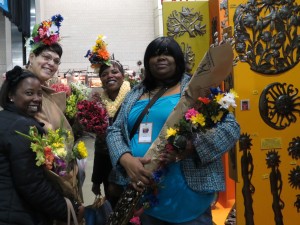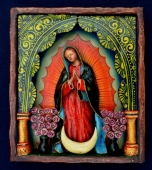It’s Philly Time!
The warehouse in Salinas could be taken for a beehive these days for all the hum of activity. We’re preparing the truck for delivering the goods to the Philadelphia Flower Show. Metal must be selected, counted, sorted, and packed. The booth – which will have a new look this year – has been designed, constructed, painted, and crated. (Thanks Brian and Lalo!) Lighting – Check! Tape, scissors, pens, tags, promo literature, calculators, screw drivers, energy bars, Starbucks cards, shrink wrap – CHECK! Have we thought of everything? Check? Not Check? Ah yes, change. We need quarters, nickles and dimes. Better run to the bank!
But we love coming to Philly every year. Return customers are starting to feel like old friends, business is always good and the flowers….Oh! The flowers! The floral displays this year promise to excite with the theme, “Celebrate the Movies.” According to the offical website of the Flower Show, http://theflowershow.com/ the theme is taken from a Walt Disney quote, “If you can dream it, you can do it.” And these people can dream, let me tell you! The rich elaborate floral creations are breath-taking and leave me thinking, “When I get home, I am going to GARDEN.” This is no small thing, for I have no talent. Walt Disney never met me. I can dream, alright. But execution is….ummm….problematic. I usually start with a Haitian metal garden stake. ( Like these: https://www.itscactus.com/catalog/garden_stakes-21-2.html ) From there, the plan falters somewhat. The stakes are pretty and I can’t kill them, though strictly speaking, I don’t know if sticking one in the ground and admiring my own eagle eye for placement qualifies as gardening.
Aside from inspiration, another of my favorite things at the Garden Show is kind of a combination ofthe flowers and the customers. The Show includes what is called a “Make and Take Room” where patrons can create extravagant floral headpieces to wear at the show. Some of these creations can be quite beautiful, and all of them – beautiful or not so much – are delightful. The people making them and wearing them are stepping out and having a good time. That is something to appreciate. (Incidently, we in the booth secretly vote on the best headpiece of the day. We’ll let you know if it’s you!)
See you in Philly!
Contributed by Linda for It’s Cactus




